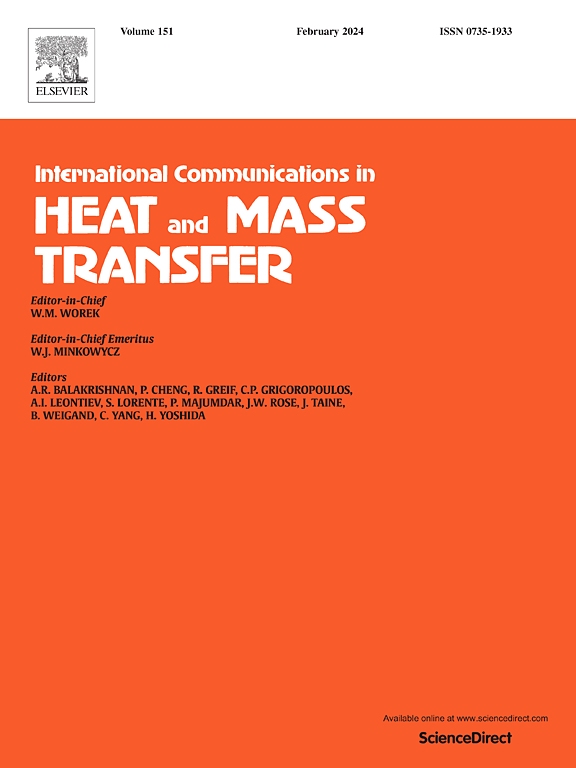New method for evaluating the influence of the cooling gallery shape on the heat load of piston
IF 6.4
2区 工程技术
Q1 MECHANICS
International Communications in Heat and Mass Transfer
Pub Date : 2025-03-23
DOI:10.1016/j.icheatmasstransfer.2025.108887
引用次数: 0
Abstract
One of the most effective methods for reducing the thermal load on pistons is the utilization of cooling galleries. Although extensive research on the heat transfer properties of new cooling gallery structures piston head failures continue to occur frequently in highly reinforced diesel engines. Using the cooling gallery of a specific diesel engine model as a baseline, its shape is altered by manipulating the hydraulic diameter. The transient fluid flow in the cooling gallery is analyzed using Fluent simulation software, while the temperature field of the piston is assessed using ANSYS. Additionally, visual experiments were performed on the piston's basic shape using a dedicated experimental platform, with temperatures at critical locations on the piston head measured via a temp-plug experiment. The effectiveness of the simulation results is demonstrated through a comparison with experimental data. Simulation results for various cooling gallery shapes are compared based on fluid flow characteristics, viscous boundary layer thickness, and Weber number. This study proposes a method for rapidly assessing the heat transfer effectiveness of the cooling gallery using hydraulic diameter and heat transfer coefficient as criteria. Results indicate that fluid flow in the wave-shaped cooling gallery is relatively stable, and fluid erosion on the walls is consistent, resulting in optimal heat transfer effectiveness.
求助全文
约1分钟内获得全文
求助全文
来源期刊
CiteScore
11.00
自引率
10.00%
发文量
648
审稿时长
32 days
期刊介绍:
International Communications in Heat and Mass Transfer serves as a world forum for the rapid dissemination of new ideas, new measurement techniques, preliminary findings of ongoing investigations, discussions, and criticisms in the field of heat and mass transfer. Two types of manuscript will be considered for publication: communications (short reports of new work or discussions of work which has already been published) and summaries (abstracts of reports, theses or manuscripts which are too long for publication in full). Together with its companion publication, International Journal of Heat and Mass Transfer, with which it shares the same Board of Editors, this journal is read by research workers and engineers throughout the world.

 求助内容:
求助内容: 应助结果提醒方式:
应助结果提醒方式:


